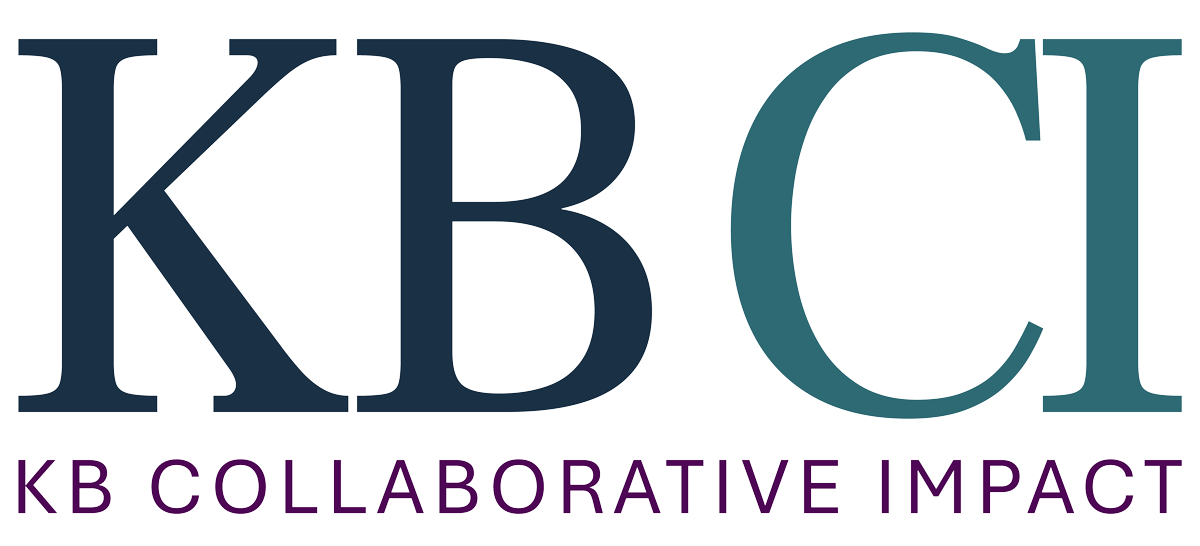
Make the Most of Your Resources
by Katherine Burke
Three steps can help your team or organization unlock efficiencies and improve productivity:
- Find your “north star”
- Unleash your team’s talent
- Stop wasting time
1. Find your “north star”
If you’ve worked with me previously or have read my prior posts, you probably know that I believe in the fundamental importance of having a strategic plan led by precise and ambitious goals. In today’s uncertain and often resource-constrained environment, organizations can streamline their efforts and resources by identifying a single “north star” vision for their future, and tailoring everything else around that starting point.
Start by asking: what kind of organization do we want to be in 5 years? 10 years? E.g. do we want to grow our market share, or do we want to be known for exceptional quality? Do we want to offer best-in-class customer service, or do we want to be lean and nimble trend setters? The critical characteristic of a north star is that there is only one. Avoid the temptation to choose 2 or 3, which will generate confusion and conflicting priorities within your organization. To maximize efficiency and avoid having staff working at cross-purposes, everyone must be driving in the same, single, direction.
With a defined vision, you can hone priorities, build strategic plans, and reorient individuals, teams and ways of working around that vision. Implementation plans will absolutely shift over time, but unless you know what you’re aiming for, it is impossible to direct resources effectively in pursuit of your goals. A clear organizational vision also provides your staff with a shared understanding of their higher purpose (at work), which will enable team work and encourage mutual support. Without a clear and shared vision, individuals will prioritize their individual or team-level objectives, often to the detriment of organizational goals. If everyone is striving to achieve the same vision, it becomes easier – even logical – for teams to share resources.
For more on strategic planning amid uncertainty, check out my recent article here.
2. Unleash your team’s talent
An organization’s people often represent both its greatest asset and its greatest expense. Countless hours are spent seeking, hiring and training the most impressive people. And yet, people can only perform exceptionally if they’re in the right role. When you are trying to squeeze the most out of every dollar you spend, you must have the right people in place for the work you’re trying to do.
Once you’ve identified your north star and developed strategic plans, consider running a “start from scratch” exercise to imagine what your team would look like if you could start fresh and build the perfect team to around your goals. What roles would you need, and what skills and talents would you hire for? Then compare this idyllic scenario to the people you currently have. You might be surprised to discover where these skills and talents already exist within your organization.
Talk to managers about where there are likely matches between your imaginary team and their current team members. Focus on individual skills and talents, not on seniority or current titles. Are there people in positions currently who could be doing more or performing better in different roles? Do you have managers who would be better suited to individual work or solo performers who would likely be great at leading a team?
Moving people around, even from management positions to individual contributor roles, does not have to mean people are being demoted. Organizations too often promote people into roles that aren’t right for them, due to the persistent cultural expectation that one must consistently climb up the professional ladder rather than growing withina role for which an individual is perfectly suited. Don Clifton describes this shift in thinking perfectly in his excellent book, “First, Break All the Rules.” Clifton tells us: “Great managers envision a company where there are multiple routes toward respect and prestige – a company where the best secretaries carry a vice president title, where the best housekeepers earn twice as much as their supervisors and where anyone performing at excellence is recognized publicly.” Consider promoting people within a role once they have developed the expertise, skill and the ability to achieve more in that role. Offer them a title and salary that demonstrates seniority and higher expectations.
Encourage managers to find out from their staff what they want to be doing. You might be surprised to learn that one of your analysts has a real talent for and interest in strategic planning or that one of your technicians is an incredible communicator. Allow people to explore new positions through temporary trials that don’t require them to permanently exit their former role if the new one doesn’t prove to be a good fit. Giving people the chance to shift into new, potentially unexpected, positions will build morale, strengthen your teams and ensure that everyone is in the role where they can give the most.
And finally, if you do need to reduce your staff, take a strategic approach. If you have individuals who perform their solo role very well, but who don’t collaborate effectively with their colleagues and cause others to waste time and effort, they should be on the departure list. How do you know if you have one of these people? First, if you’re paying attention, you’ve probably heard complaints from others. If you’re hearing from multiple people who can give you specific examples of challenges, listen to them. Second, if you’ve had to build new rules and processes that are designed almost entirely to adjust the behavior of one person, you’re accommodating that person at the expense of the rest of the organization.
3. Stop wasting time
Ensure that every person at your organization is crystal clear on their own responsibilities. If there are multiple roles that are responsible for one area, identify a final decision-maker for each piece of work. Teams and individuals can waste countless hours swirling around one task if it’s not clear who owns the final decision. People also need to know when they are responsible for supporting an effort, and understand that serving as a supporter rather than as a decision-maker doesn’t make a particular work stream a lower priority. If it is a priority for the organization, it is a priority for everyone regardless of their role in the effort. Paul Rogers and Marcia Blenko do an excellent job describing a methodology for defining roles around decisions in Who Has the D? in the January 2006 HBR magazine.
Once your organization knows where it’s heading and who’s needed to do the job, it’s critical to have systems and processes that support the work effectively. This means targeted but open lines of communication, clear milestones, and regular progress-tracking and feedback. In the same way I’ve recommended a “start from scratch” exercise around talent, I encourage you to undertake a similar exercise with a focus on communication mechanisms. Who will need to share what information with whom in order for your strategic plans to proceed smoothly and with all of the relevant inputs? How frequently will people need to coordinate and why? Can people be expected to read emails or newsletters, or do you have a culture of verbal communication?
Understand both your communication needs and your organizational culture to land on the right set of routine meetings, ad hoc correspondence, newsletters, etc. to ensure that everyone has the information they need when they need it to do their jobs most effectively. Avoid information overload and onerous reporting requirements by really understanding and sticking to critical information sharing needs.
It’s easy to find data to support or reject the value of in-person work, but I personally believe firmly in the value of regular in-person interaction. In-person engagement creates opportunities to build trust across individuals, which enables better collaboration, innovation and positivity. I’m not proposing that everyone needs to be in the office every day, but I do believe that (where possible – I recognize that some teams are simply not co-located) 2 or 3 days per week in person with colleagues can make a huge difference in both team productivity and overall team dynamics.
Develop tools and culture for strong progress-tracking and feedback approaches. Your strategic plans should include clear quarterly milestones (outputs/activities) and objectives (outcomes). Mechanisms for thoroughly assessing progress against these milestones and objectives each quarter must be in place, alongside opportunities to routinely update plans in response to internal and external shifts. A culture that allows for failure, and which focuses on progress rather than blame, will ensure that quarterly assessments are honest and effective.
For more on decision rights and effective information flows, check out The Secrets to Successful Strategy Execution from HBR Magazine in June 2008 by Gary L. Neilson, Karla L. Martin and Elizabeth Powers.
You don’t have to do it all: All of this might sound overwhelming, and you certainly don’t have to overhaul your entire organization in order to improve your efficiencies and maximize your resources. You might undertake this exercise with a team or two, or establish your organizational vision and then focus only on the most critical areas of work to refine roles and ways of working. The bottom line is that almost every organization can be making more of the resources they have. I encourage you to take some time to think about how some small changes could help you and your organization achieve more of your goals with the resources you have available.

